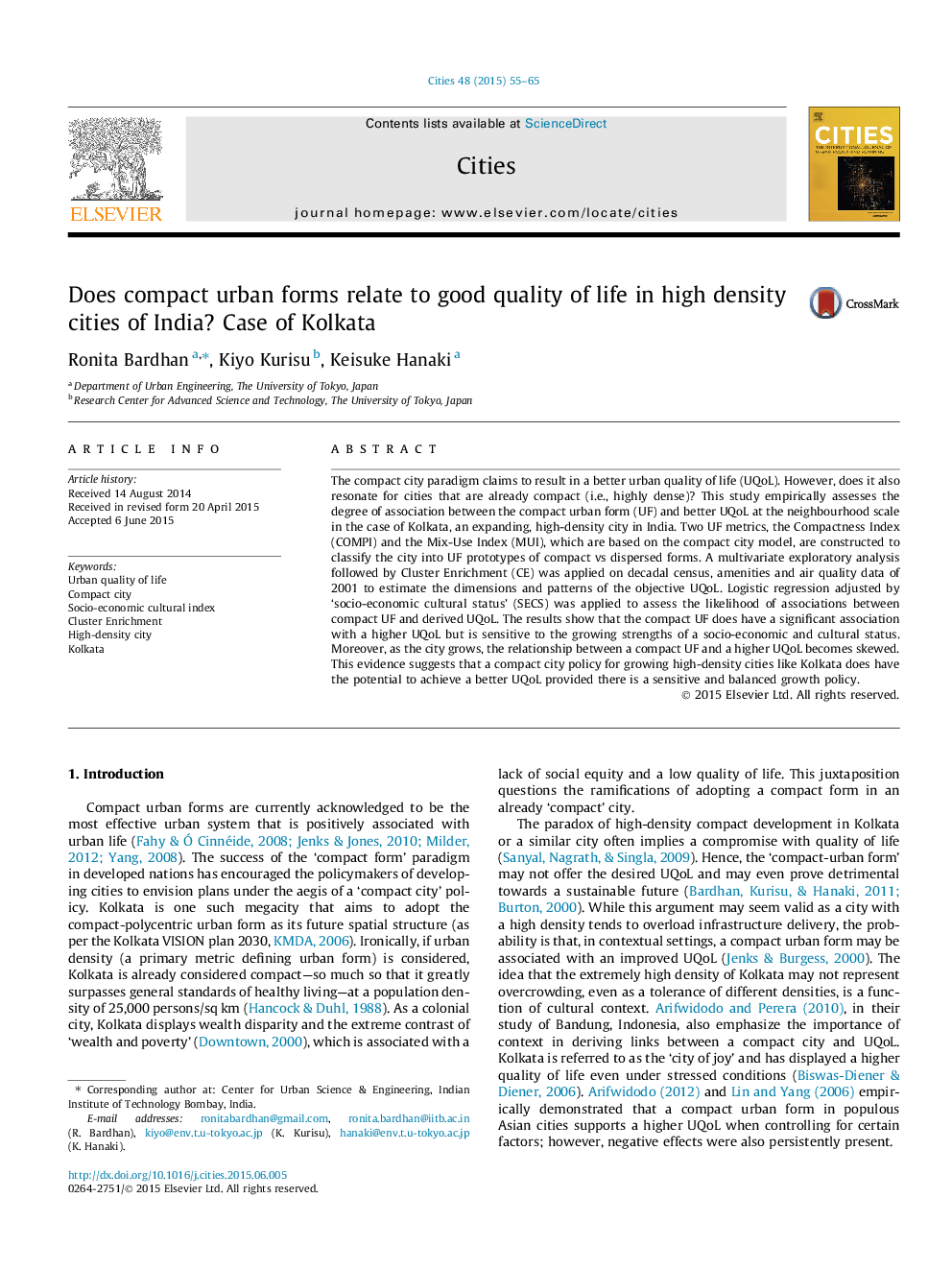| Article ID | Journal | Published Year | Pages | File Type |
|---|---|---|---|---|
| 7418416 | Cities | 2015 | 11 Pages |
Abstract
The compact city paradigm claims to result in a better urban quality of life (UQoL). However, does it also resonate for cities that are already compact (i.e., highly dense)? This study empirically assesses the degree of association between the compact urban form (UF) and better UQoL at the neighbourhood scale in the case of Kolkata, an expanding, high-density city in India. Two UF metrics, the Compactness Index (COMPI) and the Mix-Use Index (MUI), which are based on the compact city model, are constructed to classify the city into UF prototypes of compact vs dispersed forms. A multivariate exploratory analysis followed by Cluster Enrichment (CE) was applied on decadal census, amenities and air quality data of 2001 to estimate the dimensions and patterns of the objective UQoL. Logistic regression adjusted by 'socio-economic cultural status' (SECS) was applied to assess the likelihood of associations between compact UF and derived UQoL. The results show that the compact UF does have a significant association with a higher UQoL but is sensitive to the growing strengths of a socio-economic and cultural status. Moreover, as the city grows, the relationship between a compact UF and a higher UQoL becomes skewed. This evidence suggests that a compact city policy for growing high-density cities like Kolkata does have the potential to achieve a better UQoL provided there is a sensitive and balanced growth policy.
Related Topics
Social Sciences and Humanities
Business, Management and Accounting
Tourism, Leisure and Hospitality Management
Authors
Ronita Bardhan, Kiyo Kurisu, Keisuke Hanaki,
